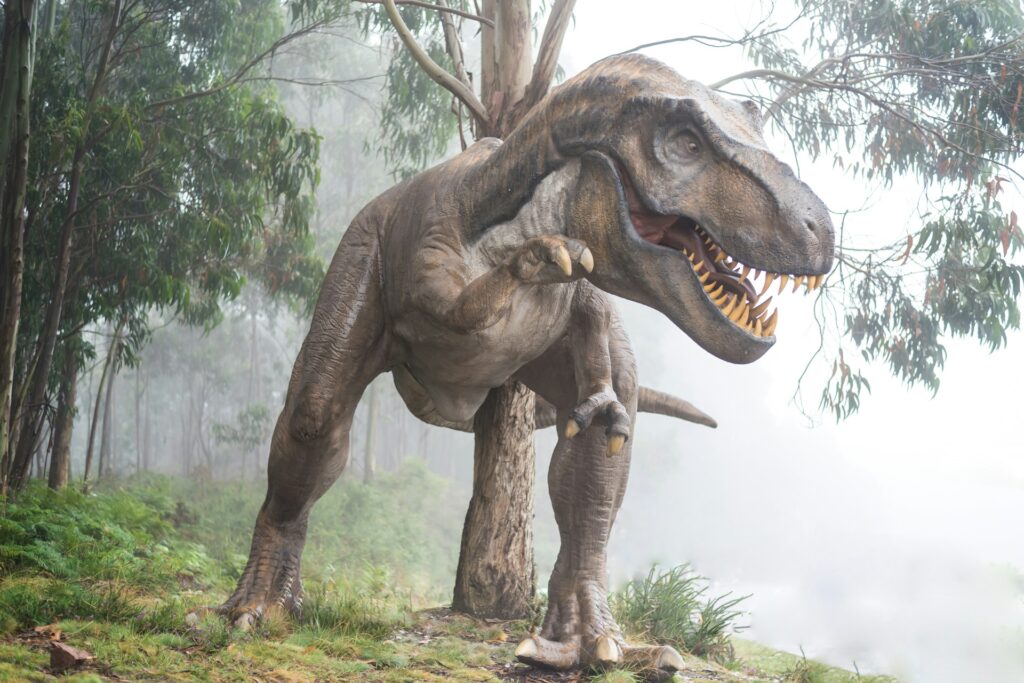Is the T-Rex in Jurassic Park CGI Or Animatronic?

Before Jurassic Park, no one had attempted digitally animating real animals in a feature film. ILM presented Spielberg with an impressive test, and Spielberg couldn’t refuse the results so convincing that he couldn’t help himself from using them in his movie.
Industrial Light and Magic were responsible for creating effects for almost the entirety of Jurassic Park. Their team used both stop motion animation and an animatronic animal – a T-Rex.
Table of Contents
Animatronics
Jurassic Park dinosaurs were brought to life using both animatronics and CGI techniques, with animatronics used for close-up shots, scenes with interaction between actors and dinosaurs and distant shots being created using CGI; together these techniques helped produce an authentic depiction of dinosaurs within the movie.
Pre-production was an exhaustive process; filmmakers spent months writing their script and designing dinosaurs from scratch. Furthermore, they employed an expert team composed of paleontologists to ensure the film would be scientifically accurate.
Jurassic Park used animatronics extensively for most of its dinosaur shots, including the iconic T-Rex attack scene. Water was added to add weight and realism while hydraulics allowed for realistic movements of its head. This revolutionary combination of animatronics and CGI was groundbreaking at the time; audiences were simply stunned when watching this groundbreaking movie.
CGI
Jurassic Park made an enormous impactful statement about CGI use when it was released to audiences in 1993; audiences had never witnessed its widespread and high quality usage before then; its effects are said to have revolutionized cinema.
Industrial Light & Magic’s groundbreaking computer-generated imagery earned them both an Oscar and BAFTA for this innovative approach to visual effects production.
ILM utilized new technologies such as Viewpaint, which allowed artists to paint textures directly onto 3D models, and Camera Motion Tracking to create convincing dinosaur movement. Furthermore, they utilized multiple software packages, from Alias for modeling to Softimage for animation and RenderMan for rendering.
Jurassic Park was the first film to showcase a full-body CGI T. rex dinosaur, created from Stan Winston’s physical model. A wireframe rig mapped out bones and joints while software called Softimage calculated movement before artists added muscle, skin, and hair.
Close-ups
Jurassic Park pushed summer blockbuster expectations forward by using both practical dinosaur models and CGI to create its breathtaking images. While CG was still used heavily throughout, animatronic close-up shots enabled filmmakers to capture character reactions more realistically while giving the audience an understanding of dinosaur power and threat.
Muren and his team strived to create as realistic an experience as possible in the movie, yet recognized there would be room for artistic interpretation. To distinguish themselves from reality they used soft contours of costumes and faces to offset more pronounced features of dinosaurs; and added effects like rain, fog, sand, and smoke for extra realism.
Another key component of the film is its fluid jib and dolly sweeps that keep momentum alive, reflecting kinesis as Grant and Muldoon navigate their environments with precision and fluidity. One scene that illustrates this technique perfectly is when they search for wounded Gennaro using close-up shots to build suspense and tension – something Grant and Muldoon did before finding him injured in their search party.
Full-height shots
Spielberg excels at using full-height shots to build suspense in his films, such as in The T-Rex Attack Scene from Jurassic Park. As Sam Neill stares off-screen with disbelief before being stunned into submission by what they see, adding another level of suspense before its big reveal. Such details demonstrate his genius as an innovator.
The film employs several low-angle shots that put audiences directly in the position of characters as they behold the majestic dinosaurs, creating a sense of immersion that makes their experience all the more exciting and satisfying.
Spielberg cleverly blends traditional animatronics and ILM’s CGI animation for an enhanced viewing experience that makes dinosaurs seem larger and more realistic.
